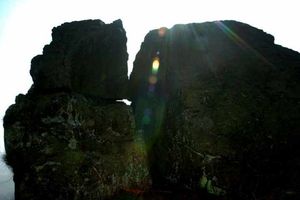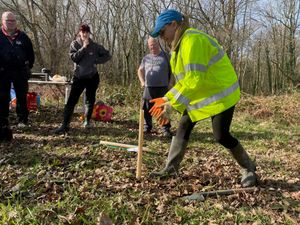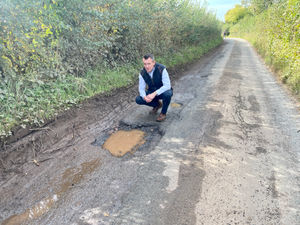Is landmark an ancient calendar?
Was Shropshire's landmark hill once used as a mystical sundial by early man?

Was Shropshire's landmark hill once used as a mystical sundial by early man?
That is the theory of Wellington author and historian George Evans who believes that a V shaped formation of rocks on The Wrekin is a "calendar stone".
And at midday on the equinox, the first day of spring, a coin sized disc of light is supposed to shine through the cleft of rocks.
Mr Evans believes the summit of The Wrekin was a sort of "cathedral" for early sun worshippers and that the "calendar stone" played an important part in the lives of its first human inhabitants.
The Shropshire Star put his theory to the test today when reporter Peter Johnson and photographer Ian Sheppard climbed The Wrekin before descending a steep scree slope on the south side of the summit just below the rock known as the Cuckoo's Cup or Raven's Bowl.
There they met George Whittingham, of Madeley, who had also read about the calendar stone theory and wanted to photograph the equinox phenomenon.
By midday, the shaft of light had started to appear, growing in size and travelling across a flat patch of rock for the next 10 minutes. Mr Whittingham said: "I'm impressed. I definitely think there is something in George Evans' theories.





